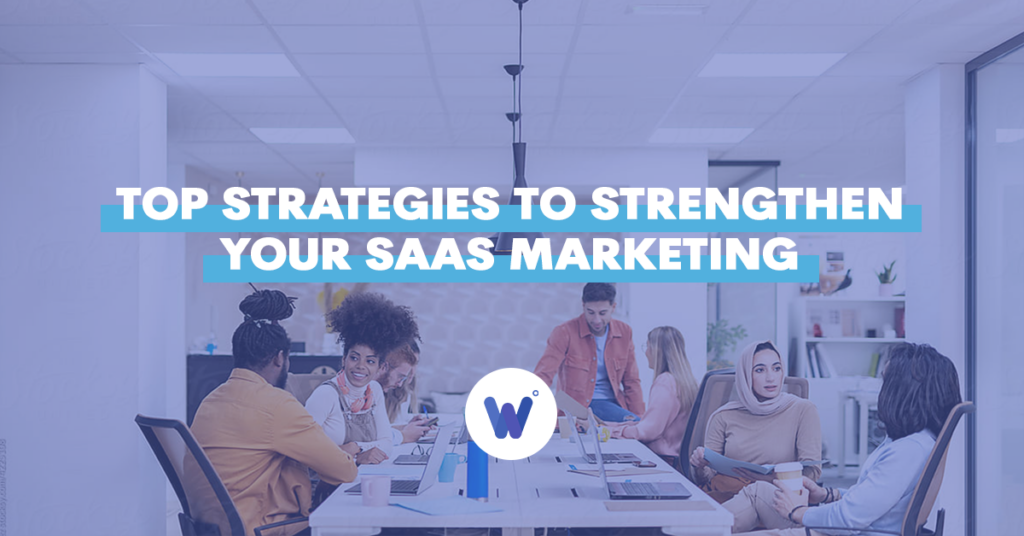
Creating and executing the right marketing strategy for your SaaS business is always a challenge.
It’s a crucial element that can propel your company from a fledgling start-up to a well-established force to be reckoned with.
SaaS revenue has been projected to grow to a whopping $250 billion by 2021.
But increased growth means increased competition. Companies need to work extra hard at avoiding the startup graveyard.
And the problem is – there is no playbook of SaaS marketing that is guaranteed to work.
But you can’t go wrong with taking a leaf (or several) from the books of tried and tested strategies of successful SaaS companies.
In this article, we’ll look at a few popular strategies and examples that can help you create a successful SaaS marketing plan.
But, first what is SaaS marketing and how is it different from regular marketing?
Effortlessly export your Google Docs to WordPress with just 1-click.
Get Started TodaySaaS marketing is the set of tactics and strategies that are used to sell and promote a SaaS (Sales as a Service) product or service, which are hosted and accessed on the cloud. These marketing efforts encompass various elements, including saas product and design, to effectively reach and engage the target audience.
Users or businesses can hire or subscribe to these online apps periodically for a “service”.
Popular types of SaaS apps include CRM, project management, customer success tools, accounting and finance, web hosting, eCommerce, CMS, data management and enterprise resource planning (ERM).
CRM software or CRM can help your SaaS marketing grow, you will have all the information right at hand to take care of customer feedback analysis, track their progress, and even follow up on prospects that may be interested in becoming clients.
70% of companies say that nearly all their apps will be stored on the cloud by 2020.
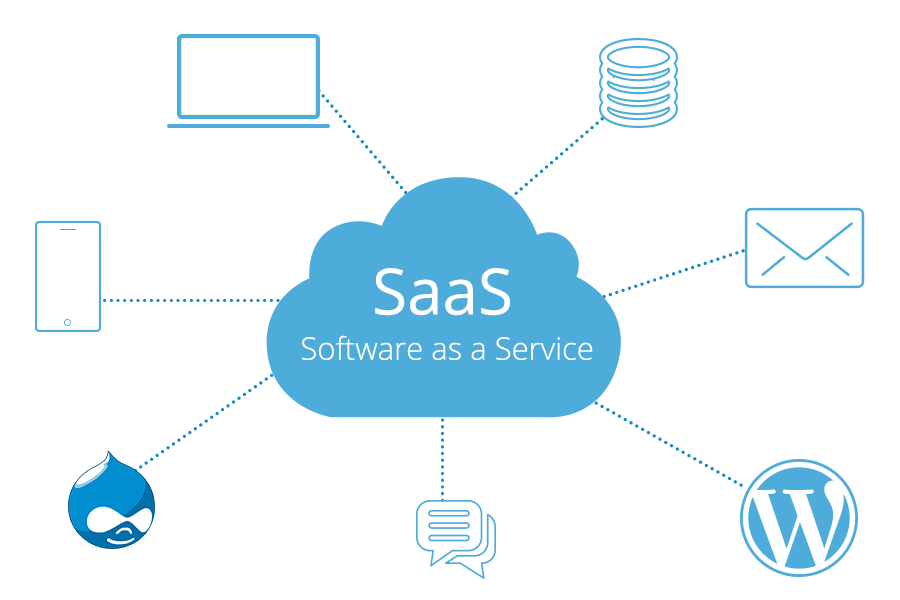
Here are some examples of how companies use SaaS brands
So, how is SaaS marketing different from traditional digital marketing?
Since there is no physical product, the functionality and user experience of the product itself is central to its success. It’s also crucial that customers receive high-quality customer education, service, and support while they engage with your brand.
SaaS companies run on a subscription-based model that needs customers to pay monthly or annually to access the product. So revenue growth is based on recurring payments, rather than one-off bulk purchases of the product.
Most companies are usually focused on lead generation and customer acquisition.
SaaS companies also need to concentrate on keeping their customers via good customer retention strategies. Because that’s’ how they make the most revenue.
Ensuring customer satisfaction is not just about the product; it also extends to the overall customer experience, which includes aspects like customer support and regular updates. This is reflected in the SaaS agreement, which outlines the terms of service, subscription details, and usage rights, emphasizing the importance of legal considerations in maintaining a strong customer-provider relationship.
The SaaS market might be shooting up, but competition is fierce.
Just run a search on software review company Capterra and you’ll find over 500 results for ‘CMS.’

To stand out, you’ll need to adopt a kickass SaaS marketing strategy that works for your brand and product.
Here are a few strategies that you can keep in mind while you design your own.
Compelling content is the lifeblood of any digital marketing strategy, especially when it comes to marketing for B2B SaaS companies. And it’s no different for SaaS products.
SaaS companies that use blogs to educate their target audience get a 14% increase in organic traffic compared to blogs that focus on the company alone.
You’ll want to share helpful and relevant content that is designed to attract and engage your target audience so that they will ultimately love you and become your customer.
Buffer, the social scheduling app is a legendary success story having grown from a SaaS startup to 4 million users and counting
Their content-driven strategy is a noteworthy example of how amazing results can be achieved on a low budget. Their growth was powered by strategic and innovative content ideas that revolved around their target audience.
In their early years, Buffer relied heavily on guest blogging on well established social media sites like Social Media Examiner. This allowed them to increase reach and exposure.
The other strategy used was to provide value by pulling together all the already available bits and bobs of information on a particular topic aka content curation.
In this highly popular blog post on the science of colors in marketing, they’ve put a new spin on the topic by bringing together and presenting existing research, infographics, and insights.
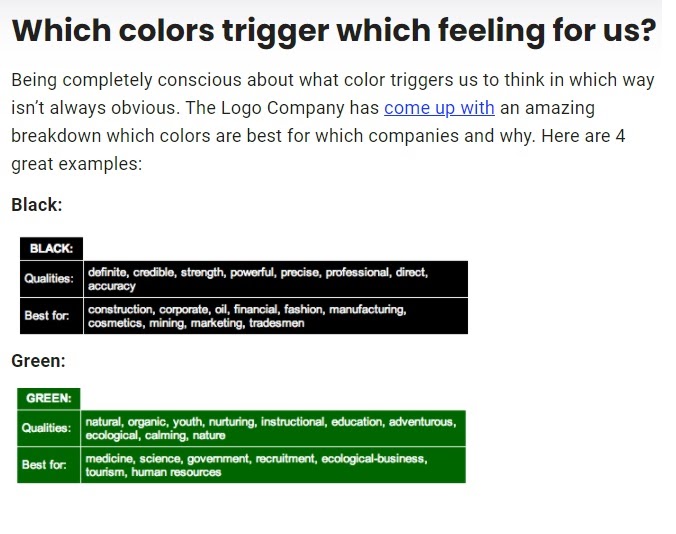
They’ve also used transparency as a content marketing strategy via their Open Culture blog which covers everything from office culture to their business decisions.
This was a smart move because such articles are likely to be a magnet for start-ups and small companies who want to emulate growth.
In opening up the inner workings of their company, they’ve gained their audience’s trust and also attracted a huge number of new readers to their website.
These content strategies were adopted over the years and fueled their growth. They slowly grew a massive following and dozens of viral articles that allowed them to increase web traffic and boost brand awareness.
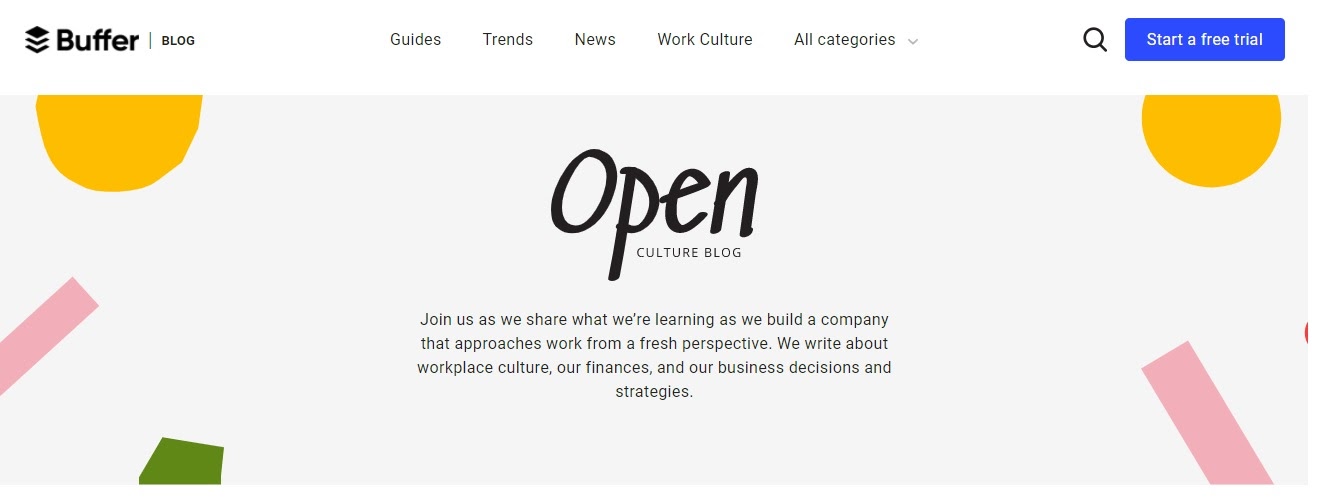
Takeaway
Adopt a content-first strategy that keeps your target audience at the center.
Aim to educate, inform, and delight them with compelling content that can add value, leveraging the power of AI in SAAS to enhance their experience. Don’t forget to mix up tactics depending on which part of your sales funnel your audience is at, utilizing AI-driven insights to personalize and optimize your approach.
If you think influencer marketing and SaaS don’t really go together, you’re wrong.
Influencer marketing for a SaaS is not as sexy as say, modeling clothes on Instagram. But many brands are increasingly embracing it because well… it works.
49% of us rely on influencer recommendations while making a purchase and influencer content delivers a ROI which is 11 times higher than other digital channels.
Graphic design tool Canva successfully grew their brand using influencer marketing in their heyday.
The graphic design tool was running on a freemium model and was a great product, to begin with.
But their success grew when they started identifying brand evangelists on YouTube and getting testimonials from those who made video tutorials using Canva.

When they found that Guy Kawasaki, original Apple employee, and marketing specialist, was using Canva to make his graphics, they reached out to him. He became Canva’s brand evangelist and helped their brand stand out.
You’re probably thinking, but how much is it going to cost me?
For influencer marketing to work, you needn’t rope in a celebrity.
You could partner with a micro-influencer. This is a regular person who has their own niche and a lower number of followers – anything between 1,000 and 10,000.
Based on which social media platform you choose, micro-influencers could charge anything between $2 to $25 post per 1,000 followers. Besides, they have a 60% higher engagement rate compared to top influencers.
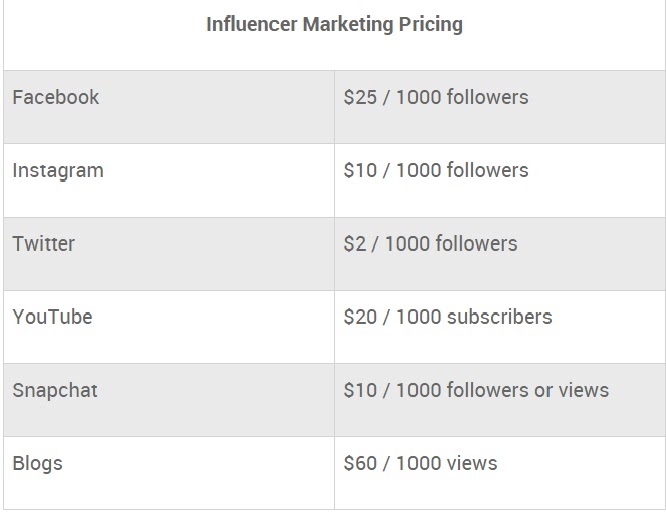
SaaS apps and software are not the most visually appealing for social media.
Adobe solved that problem by using influencers to share inspirational thoughts on their Instagram page. Apart from using influencers to take a stance on social issues, they succeeded in adding life and soul to their brand.
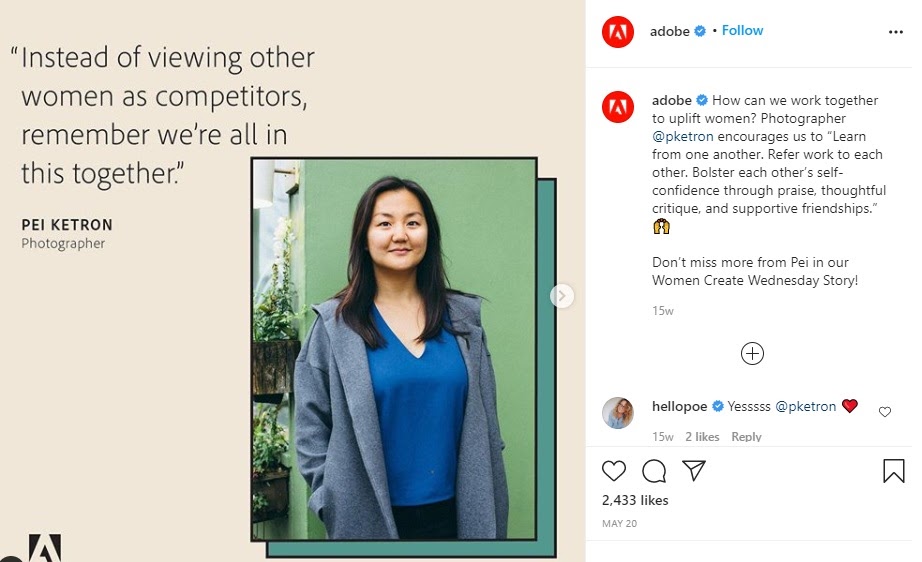
Takeaway
Consider using a micro-influencer to spread a good sentiment about your brand. You could use them to drive buzz around a new product or service launch or simply increase visibility through targeted social posts. A great SaaS website design Agency will also help you improve your product design, optimize your UX/UI, and win more customers.
A SaaS company can’t survive if it’s bleeding customers. Reducing churn is critical to long-term success.
80% of your future profits will come from just 20% of your customers.
So you’ll want to make sure that your current customers are thrilled with your product and continue to keep subscribing.
And a reliable way to do this is by email marketing. Nearly 80% of small businesses use email for customer retention.
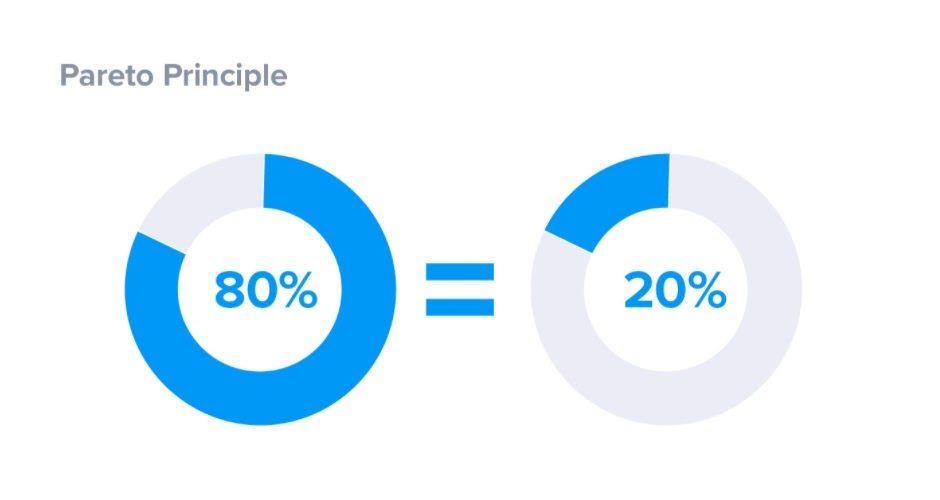
Creating an email campaign that is focused on engaging your audience, encourages them to continue subscribing to your product.
But every user receives a ton of emails every day following a sign-up of a SaaS product or service. These could include
Don’t overwhelm your customers by bombarding them promotional offers and generic content.
Instead, zero in on segments of your target audience to send them highly personalized and targeted emails that deliver insight and create value.
This is exactly what Moz did.
By 2013, they were making over $29m in revenue. But, their churn rate was through the roof.
Once they knew they had a problem, they came up with an experiment. They identified customers who had subscribed less than 30 days ago.
Moz sent them an engaging onboarding email setting out outreach suggestions and actionable solutions to help them improve their link building strategy. (The mock-up email is below)
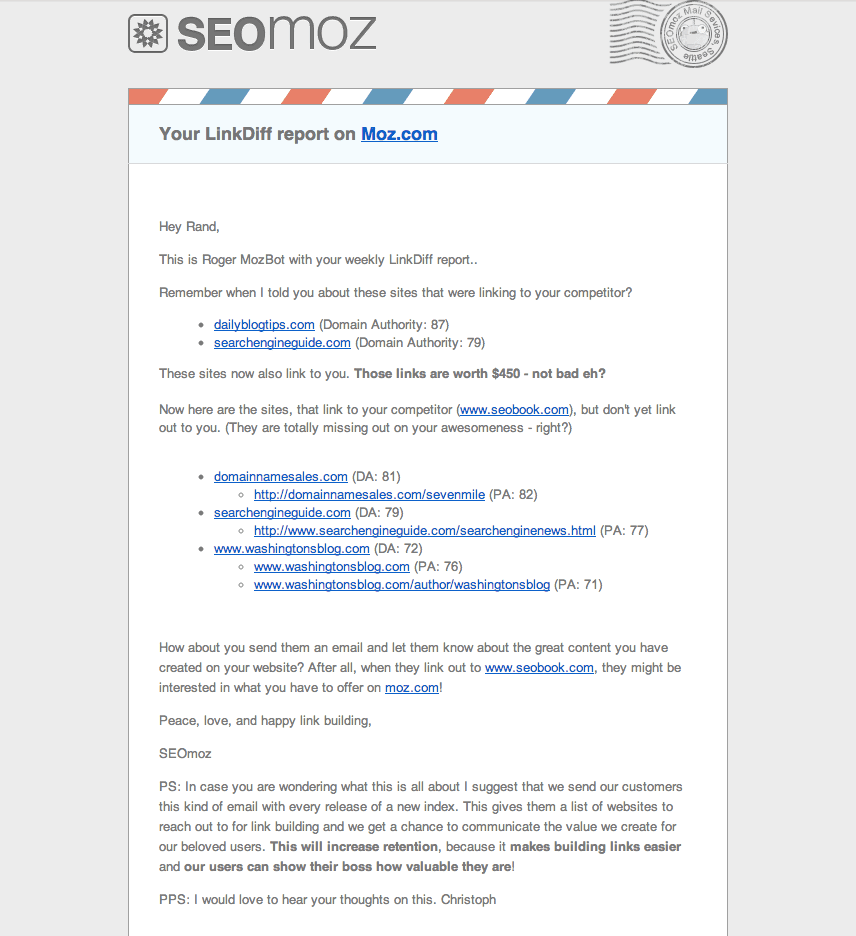
And boom. 30-day churn rates fell from 15% to 9%.
Takeaway
When you’re setting up an email campaign, think about how you can give your SaaS customer real value. You can do this by addressing their pain point, educating them with new insights, or showing them you know how to deal with any potentially damaging business situation by utilizing customer feedback solutions.
More than half of the world’s population will be on social media by the end of 2020.
So, it’s essential for SaaS to use social media to connect with their users. They can use social media platforms to:
When you don’t have a physical product it can be hard to think of ways to humanize your brand.
But many SaaS companies are using social media to cultivate a brand personality and engage their users with fun and interactive content.
Grammarly’s Instagram account does this well by sharing a mix of funny quotes, writing tips, inspirational thoughts, interactive posts that target their user audience.

They’ve added their posts in their Instagram stories under different campaigns – food writing, mental health, Pride, 2020 goals, among others.
They keep their content lively and socially relevant even if the posts are not directly promoting their product which is a digital writing tool.
Social ads
Facebook is the biggest social media platform with over 2.5 billion online users.
This means you’re missing out if you’re not using Facebook ads for your B2B SaaS. In fact, over 90% of B2B marketers are using Facebook, rather than LinkedIn.
Advertising on Facebook can help you target specific customers within a certain demographic or based on their interests.
Check out this example of an ad from GitLab which encourages users to download a lead magnet. The 4-step graphic helps people visualize how the product works and clearly lets people know what they’re getting from the product.

In the following 7-sec video ad from ClickUp, the eye is drawn to their tagline ‘One app to rule them all’. That alongside the project management dashboard graphic and mention of top SaaS brand names communicates what the product is at a glance.
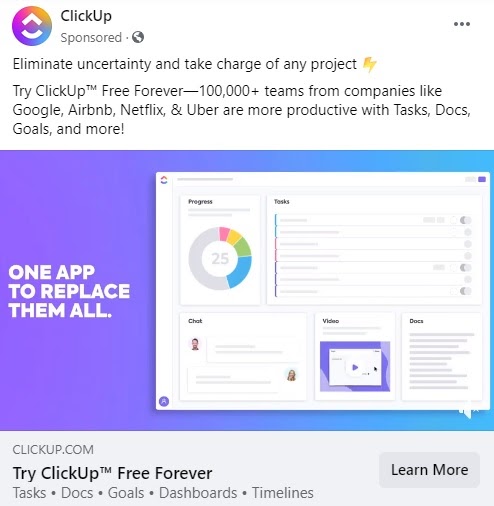
Don’t miss the clear and actionable CTA ‘Learn More’ at the bottom.
PS – 45% of B2B SaaS used Learn More as a CTA in their Facebook ads.
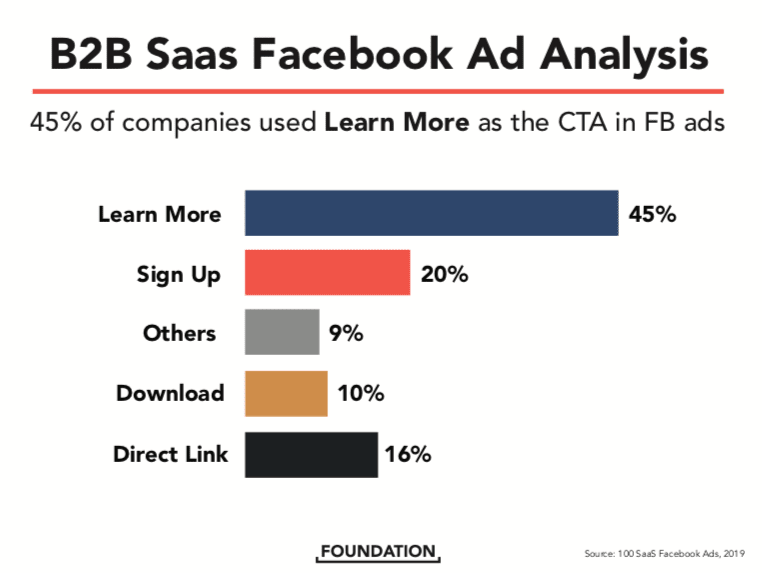
Whether you want to increase lead generation, customer acquisition, or conversions, Facebook ads are a great strategy if you want to get really focused on your marketing effort.
Here are a few tips to keep in mind
Takeaway
Use social media to create brand awareness and increase reach by projecting a bit of personality and soul. Target users with personalized Facebook ads that are designed to get seen by the right people and boost conversions.
When you’re a marketer growing a SaaS, the multitude of channels and options available might seem overwhelming.
There is no single marketing strategy that is guaranteed to produce results.
Every SaaS is different and it helps to understand the right channels that can help you win over a potential customer and retain your existing customers.
Focus on your buyer through the SaaS sales cycle and feed their thirst for information with unique and relevant content.
Expand your audience reach using influencer marketing and once users sign-up, keep them engaged with value-laden emails.
You could use organic social media to promote your brand and content or target certain demographics using social ads.
It’s a combination of tactics and strategies underpinned by sound digital marketing principles and digital branding solutions that have worked for SaaS companies.
You’re now well on the way to creating a successful SaaS marketing strategy.
Writing SaaS content? Let us help you save hours of time. Find out how.